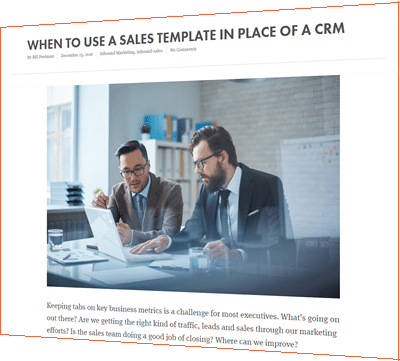 As you begin the dive into blog writing, you may come across various terms or phrases that you don’t quite understand. This blog post contains 44 commonly used blogging terms so you can rest easy and just focus on creating great content.
As you begin the dive into blog writing, you may come across various terms or phrases that you don’t quite understand. This blog post contains 44 commonly used blogging terms so you can rest easy and just focus on creating great content.
Above the fold: The top area of a website that can be seen when the first page loads, before scrolling down.
Alternative text/tag or attribute: Alt text is a word or phrase that describes an image on the web. An alt tag is helpful to both users (should their pages not fully load) and search engines (for when they perform crawls).
Anchor text: Used to anchor a URL to text on a web page. When users view the page in a browser, they can click the text to follow through on wherever the link may lead them. It would commonly be an internal link to give them more information on the text highlighted, or an outbound link citing the information referenced.
Avatar: The graphical representation of yourself (or another user) on your website.
Blog: Short for weblog or web log. A blog is collection of thoughts, media, links, etc. shared with others online.
Blogger: A person who is writing for a blog.
Blogosphere: The collective community of all blogs and bloggers on the internet.
Category: A category or categories is a collection of topics that you can use to group your different blog posts together. For example, a post about Twitter and a post about LinkedIn would both all under a “social media” category.
CMS: Content management system – Software that allows creation, publishing, and management of a website’s content.
Comments: The thoughts or feedback of your readers left in response to a blog post.
CSS: Cascading style sheets – CSS defines how a web page will display the different HTML elements. For example, you’d edit a CSS file to make all of your post headlines a different color.
Dashboard: The administration area of your blog where posts are created, comments are moderated and etc.
Directory: A blog directory is a website that lists blogs, usually ranking them by their popularity and ordering them by subject or category.
Domain name: A string of letters, numbers and/or hyphens, separated by periods, that you type into your browser to visit a particular website.
Embed: To place content from another website within your own blog’s post or page. A common example would be embedding a video from YouTube, or an infographic from another site.
Favicon: A favicon is the small symbol (usually adapted from a website’s logo) that appears in browser’s address bar and user bookmarks.
Feed: A feed is a function of special software that allows “feedreaders” to access a site automatically looking for new content and then posting the information about new content and updates to another site. This provides a way for users to keep up with the latest and hottest information posted on different blogging sites.
Footer: The bottom area of your blog that usually contains a copyright notice as well as links to about and contact pages, terms of service, and privacy policies.
Header: This is the top part of your blog, appearing before any pages or posts. Headers generally include items such as logos, taglines, and navigation menus.
HTML: Stands for HyperText Markup Language and defines how text elements are displayed on a web page.
Hyperlink: A linked image or text on a website or digital document that when clicked, takes you to another page on the internet.
Geotargeting: Delivering different content (e.g. advertisements) to a reader or visitor based on their geographic location.
Inbound link: A link on someone else’s blog or website that points to your blog or website. Inbound links are great for improving SEO.
Index: The process by which search engines find your content and then make it available to users by storing it and displaying it in search results.
Internal link: An internal link is a link that points to another section or page of the same website.
Jump: Creating a “jump” means adding in a link so that your visitors see a summary of your blog post with a read-more link for them to click on should they wish to view the whole post.
Keywords: Words that users enter into search engines to find relevant pages, and if used correctly can help increase organic traffic to your blog. Picking keywords is the process of determining what topics are most relevant to your target audience or buyer persona and crafting content around those topics.
Meta Description: A short description (typically should be less than 150 characters) of that particular page or post provided with the title when your blog comes up in the search results page.
Newsletters: An e-mail communication tool used by bloggers to alert their subscribers of updates, important news, downloads or more.
Nofollow: A link attribute which prevents links from being crawled by search engines.
Outbound link: A link that points to an external website or web page.
Permalink: An address or URL of a particular post within a blog.
Pop-ups: A smaller window that appears upon visiting a site, or performing an action, which may include an ad, encouragement to sign up for a newsletter, or enter a competition.
Post: An article on a blog
Redirect: Used to redirect the user to a different location. It typically takes place when a domain name changes. A redirect ensures that people who have bookmarked the old page/URL can still find the updated page/URL.
RSS: Short for Really Simple Syndication, a means by which users can subscribe to a feed making it easier for users to follow content and updates.
SEO: Search engine optimization – Techniques used to increase organic traffic through search engines.
Sidebar: A column used to display content on a blog, other than the post or page’s main content.
Sitemap: A list of pages on a website (like a table of contents) to help users easily access different pages of your website.
Subscriber: A person who has chosen to stay updated on your new posts. Your blog should have multiple means through which users can subscribe to your blog content. These should include email and RSS.
Tag: Similar to a category as it is a word or name used to classify a blog post, but usually more specific.
URL: Uniform Resource Locator – The exact address of a piece of information that can be found on the web, such as a page.
Vlog: A video blog
XML: Extensible Markup Language – Extremely useful in describing, sharing and transmitting data across the internet. XML defines data, and HTML was designed to display data.





